To continue the series today I have the LT1085 for you:
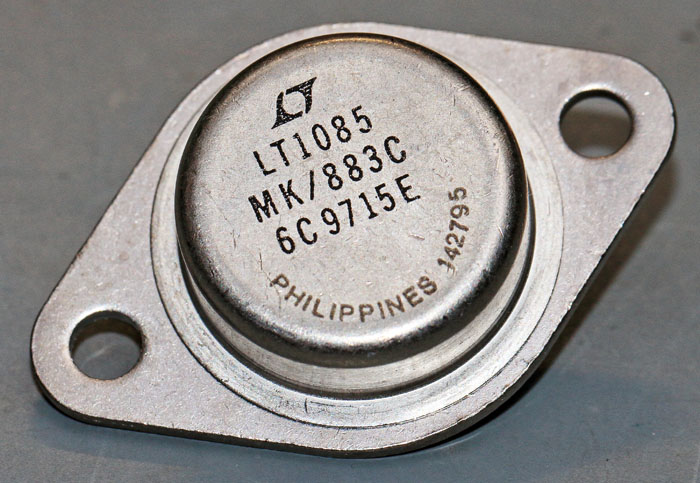
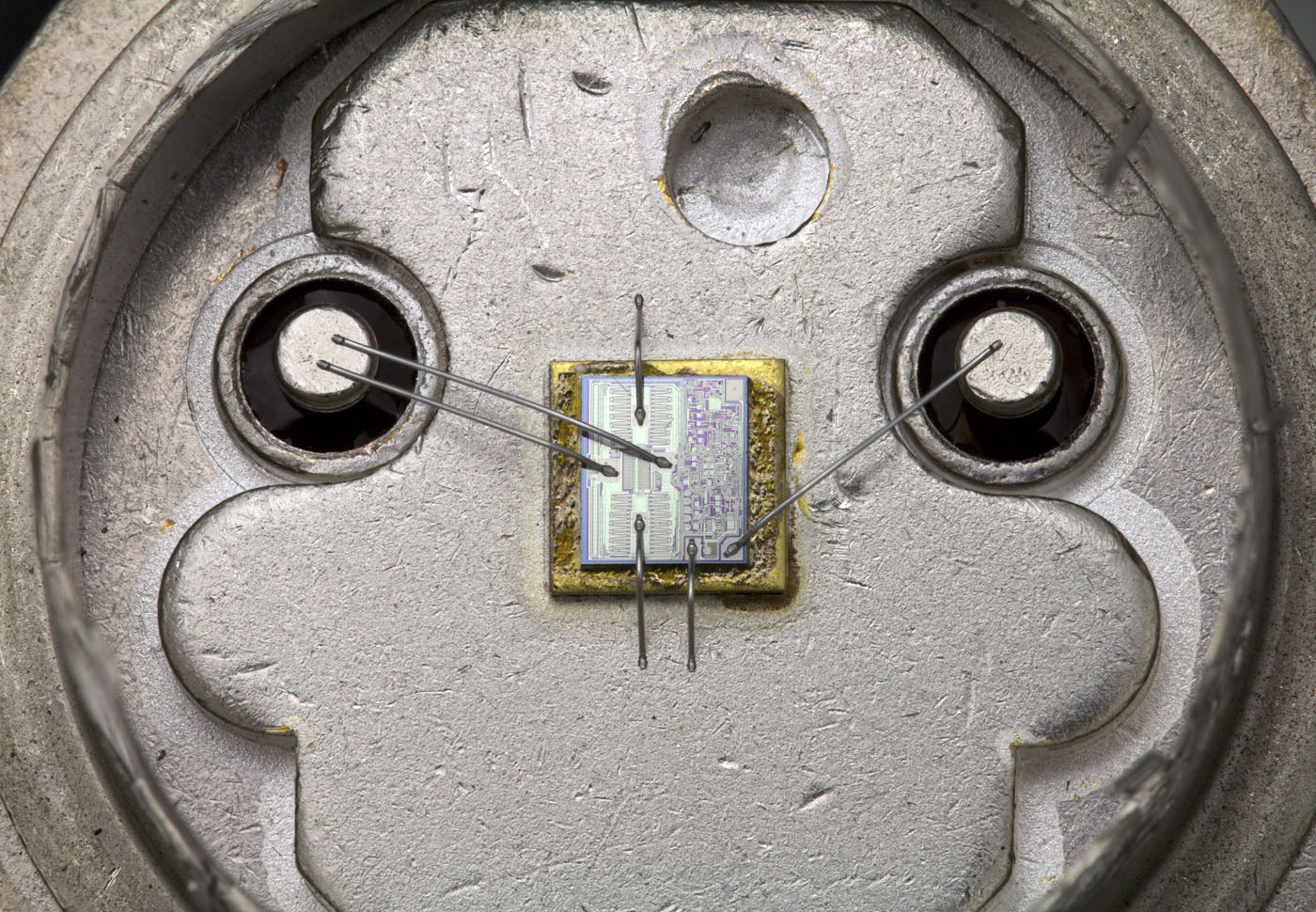
Same big heatspreader but smaller die.
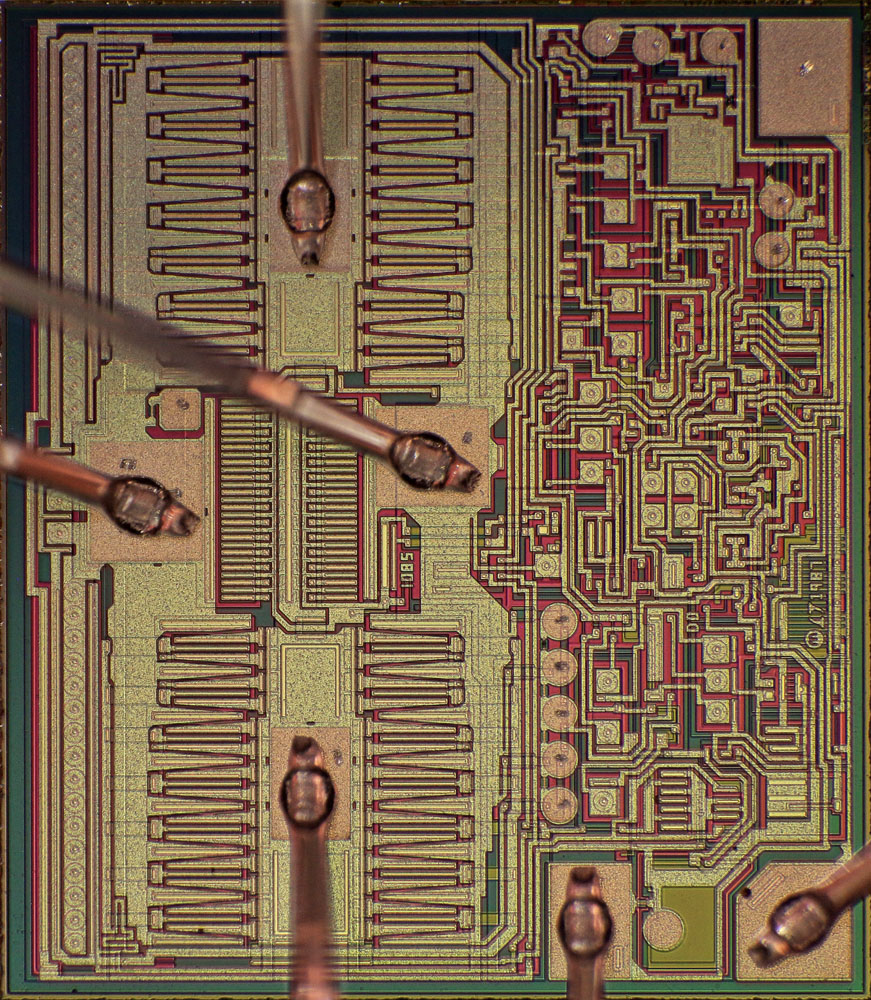
Here you can see they shortened the output stage transistors and cutted the driver transistor in half.
Also reverse protection diode area is smaller.
Another interesting point is the shunt for current limitation:
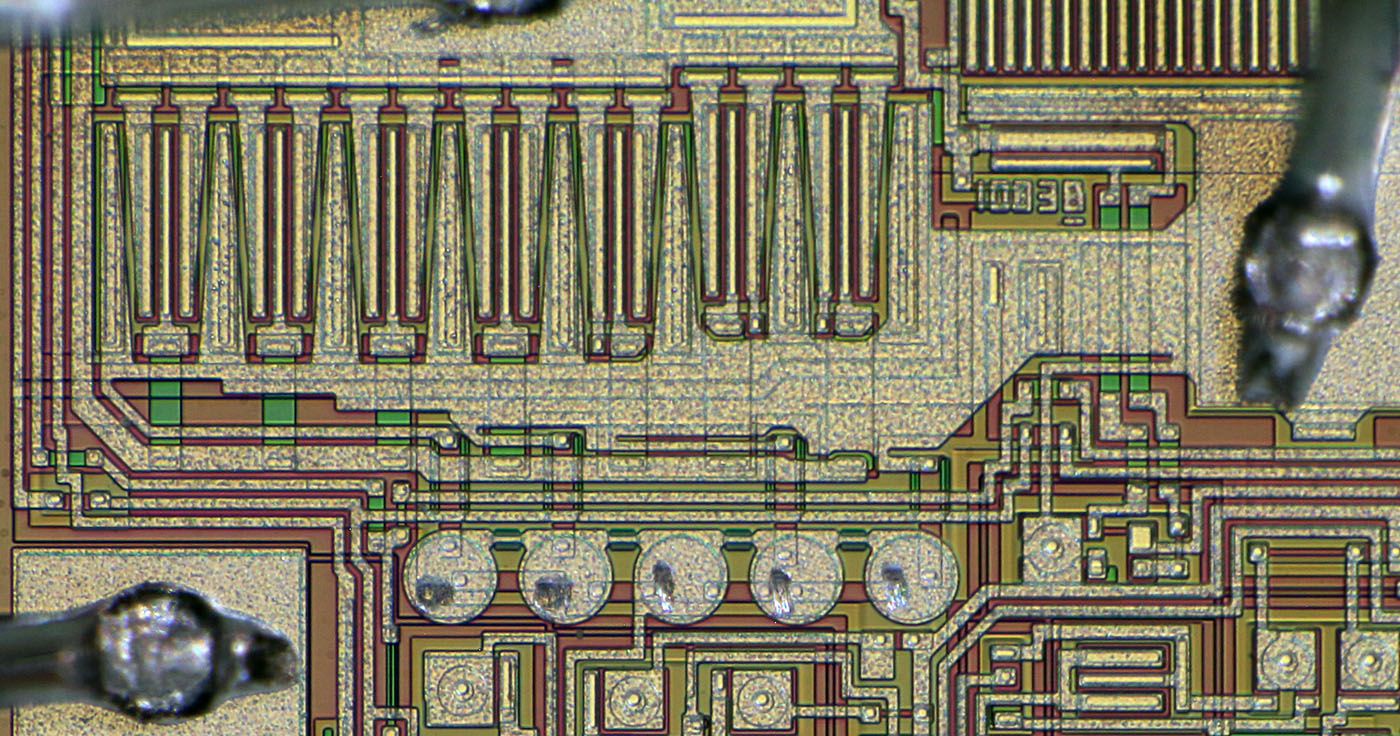
LT1083
A pointy metal line and every fuse is intact.
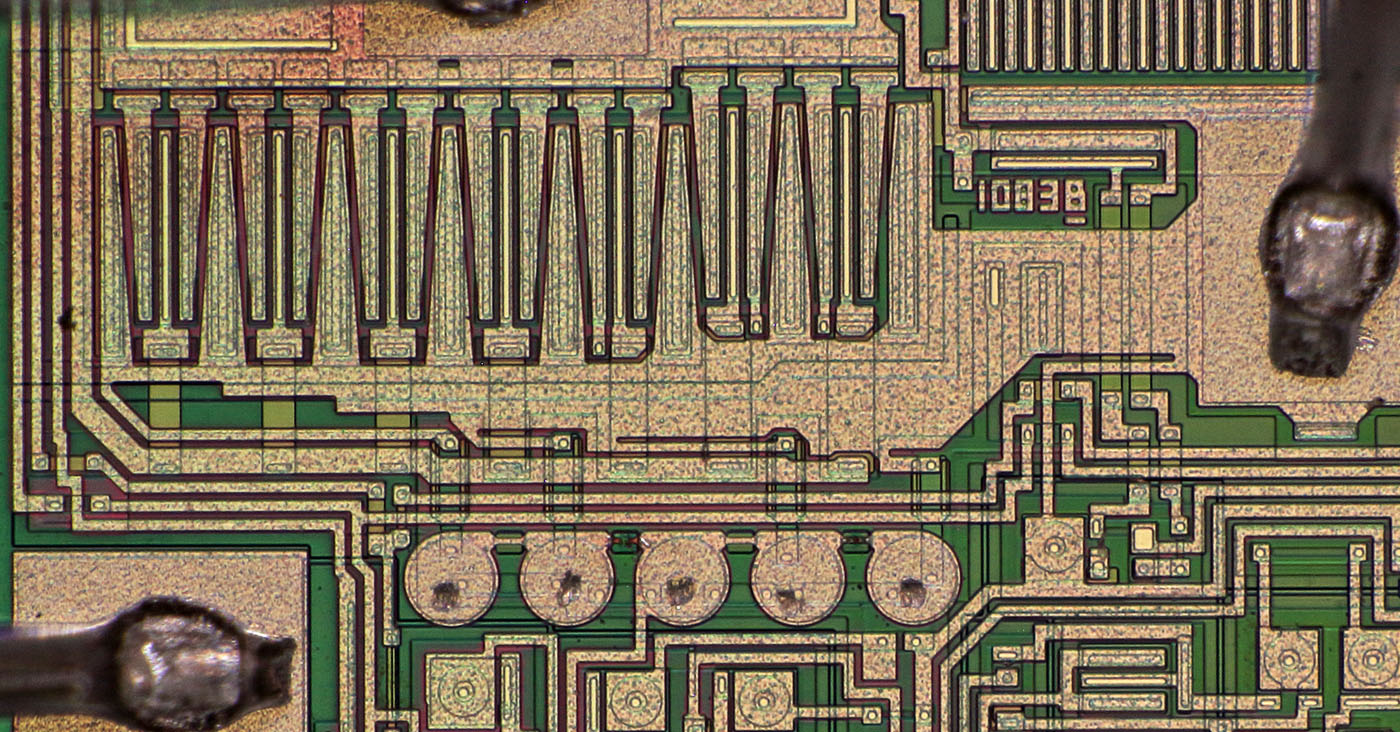
LT1084 (LT1083-die)
A pointy metal line and some blown fuses.
=> Less current to adjust the LT1083-die to a LT1084.
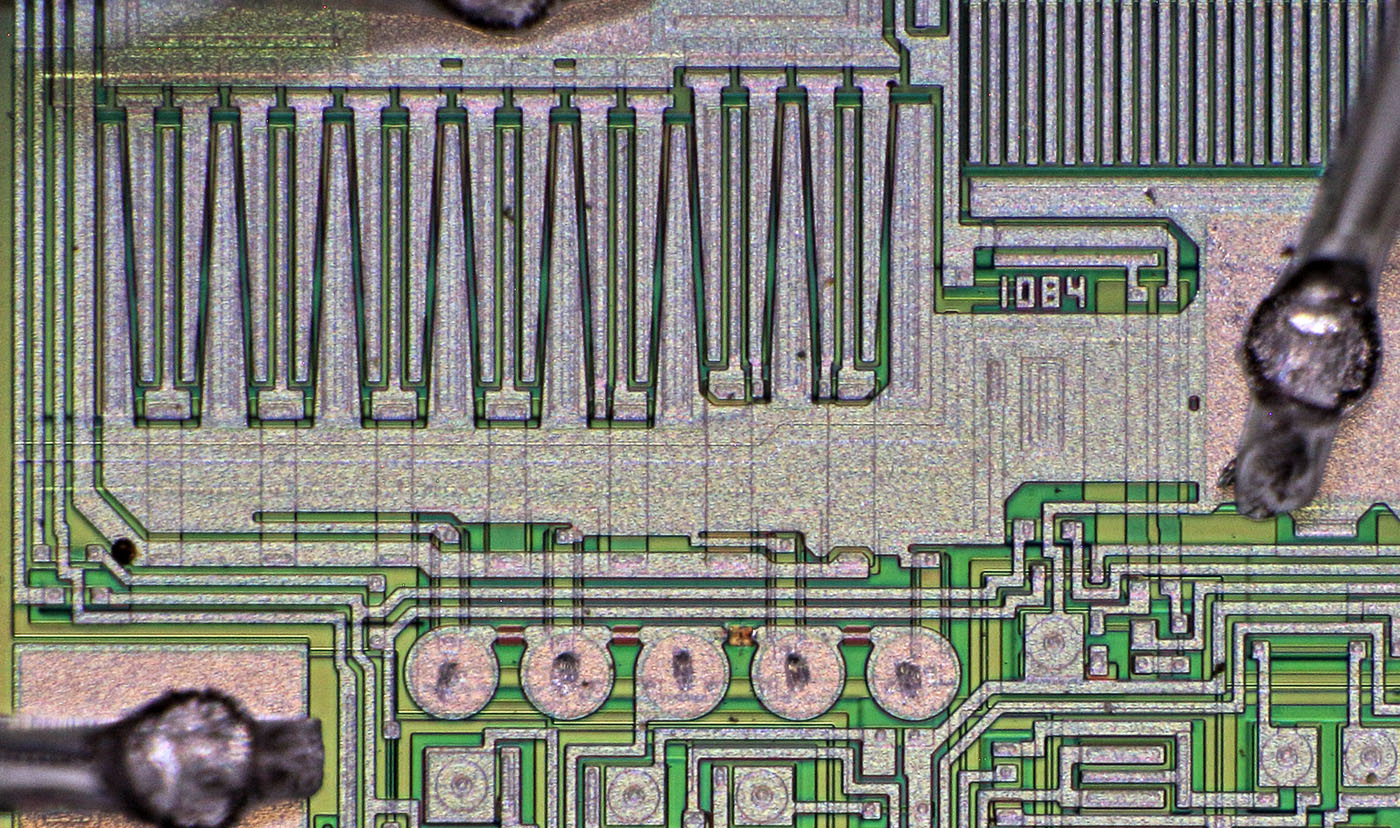
LT1084 (LT1084-die)
A broad metal line and one blown fuse.
=> More current but multiplicated only by two power stages (not four as in the LT1083).
=> The blown fuse shows that the fuses are not only for changing LT108x-variants, they are also used for fine adjustment. Otherwise they wouldn´t have blown a fuse on a LT1084-die to use it in a LT1084.
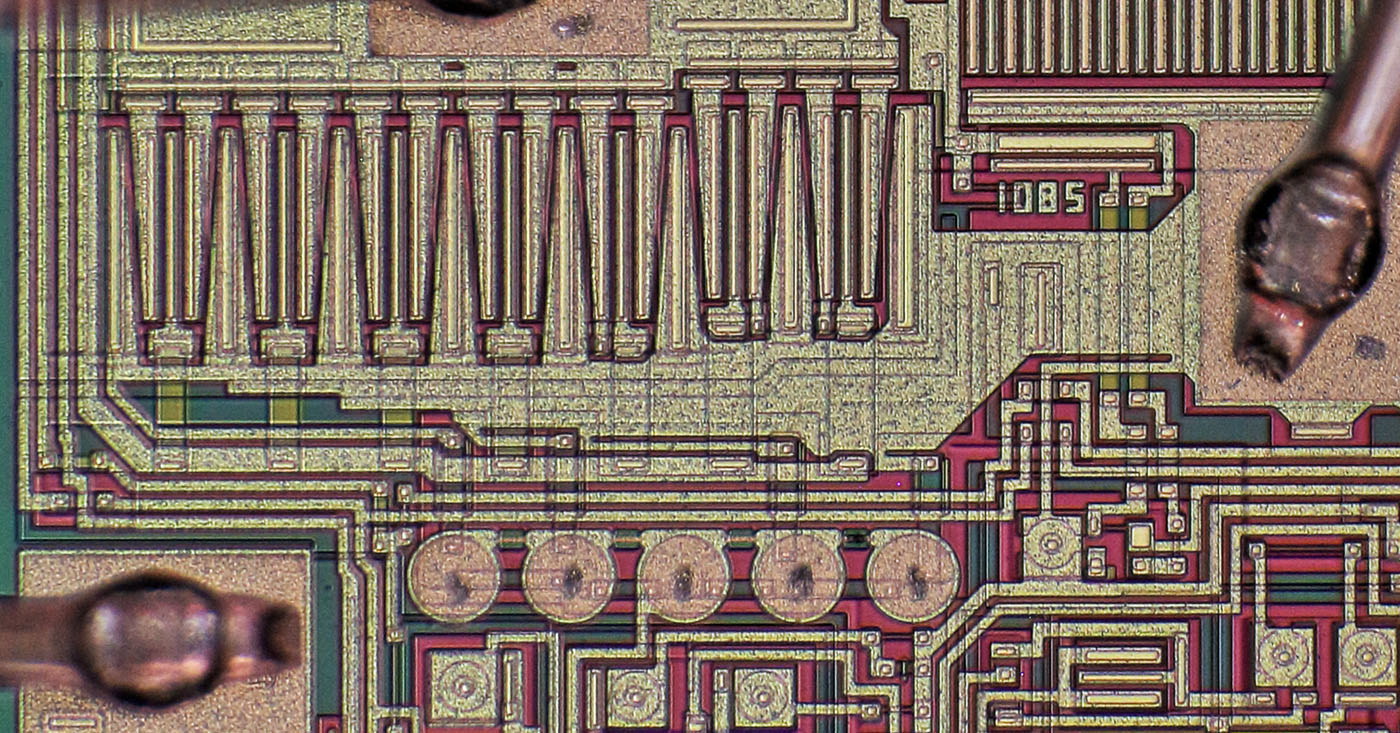
LT1085 (LT1085-die)
A pointy metal line and one blown fuse.
=> Less current.
Anyone an idea what these structures do:
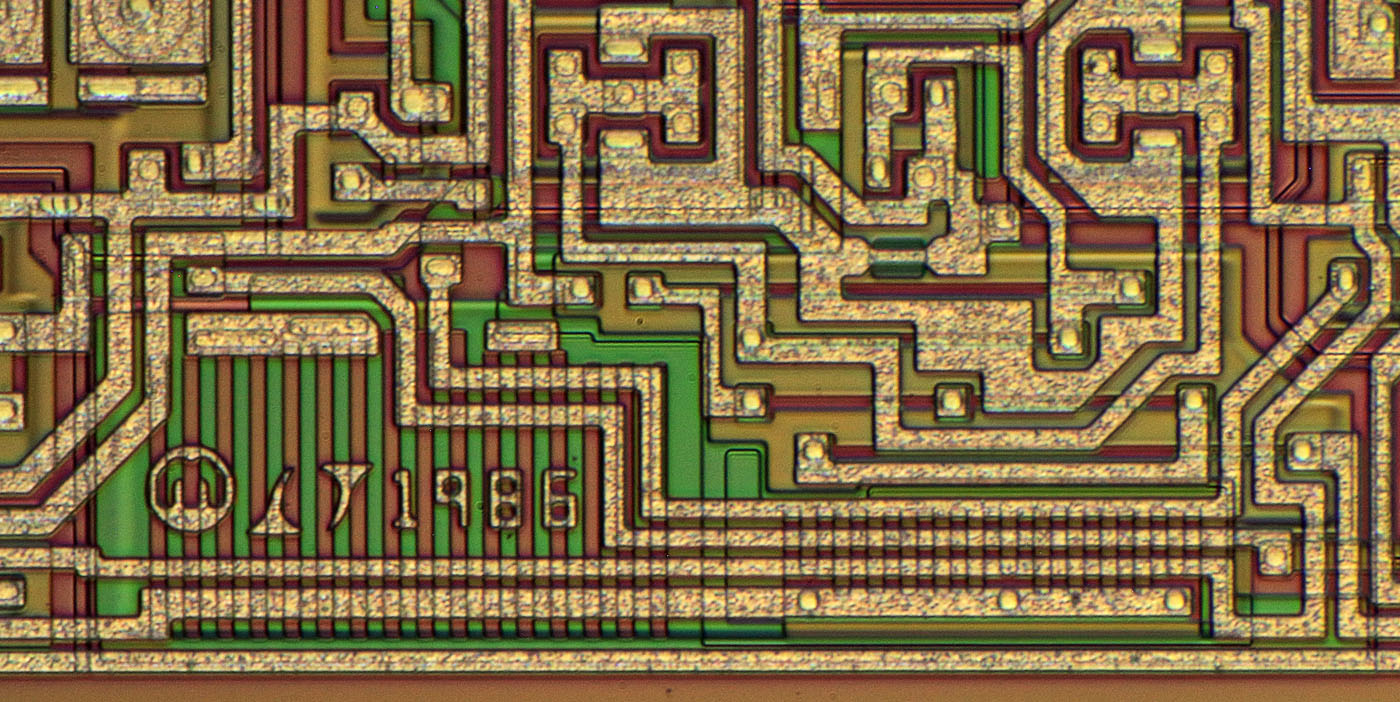
LT1083-die
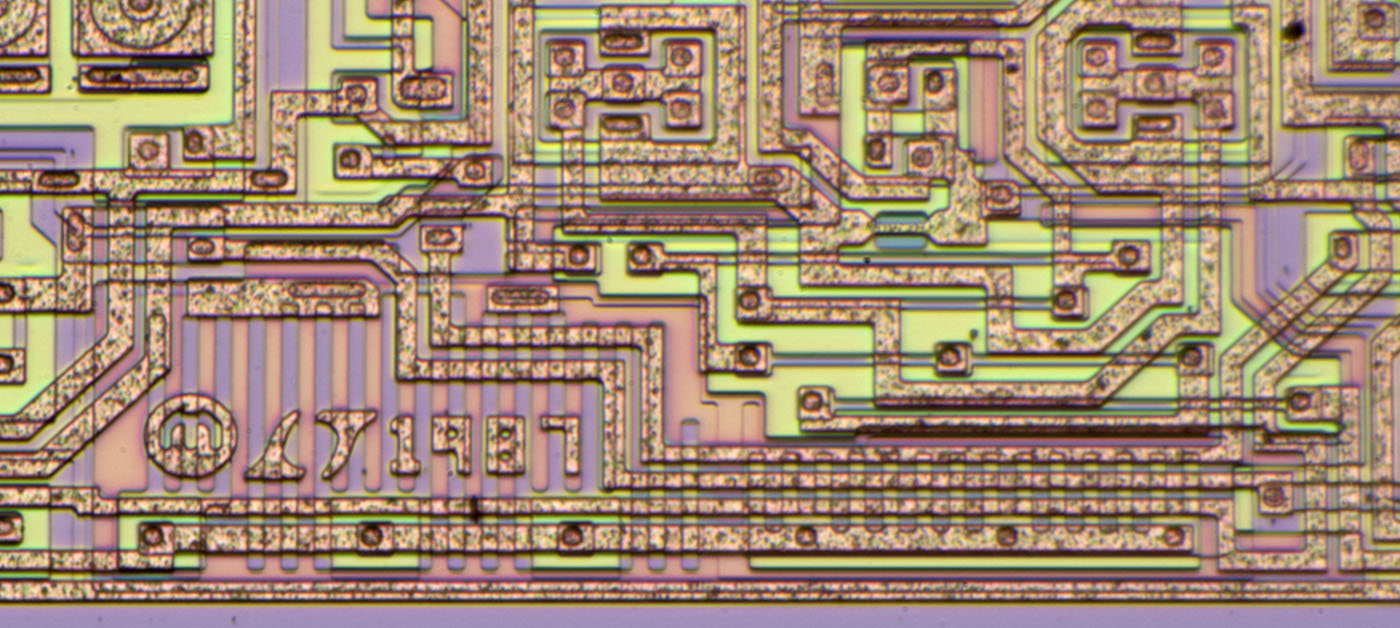
LT1084-die
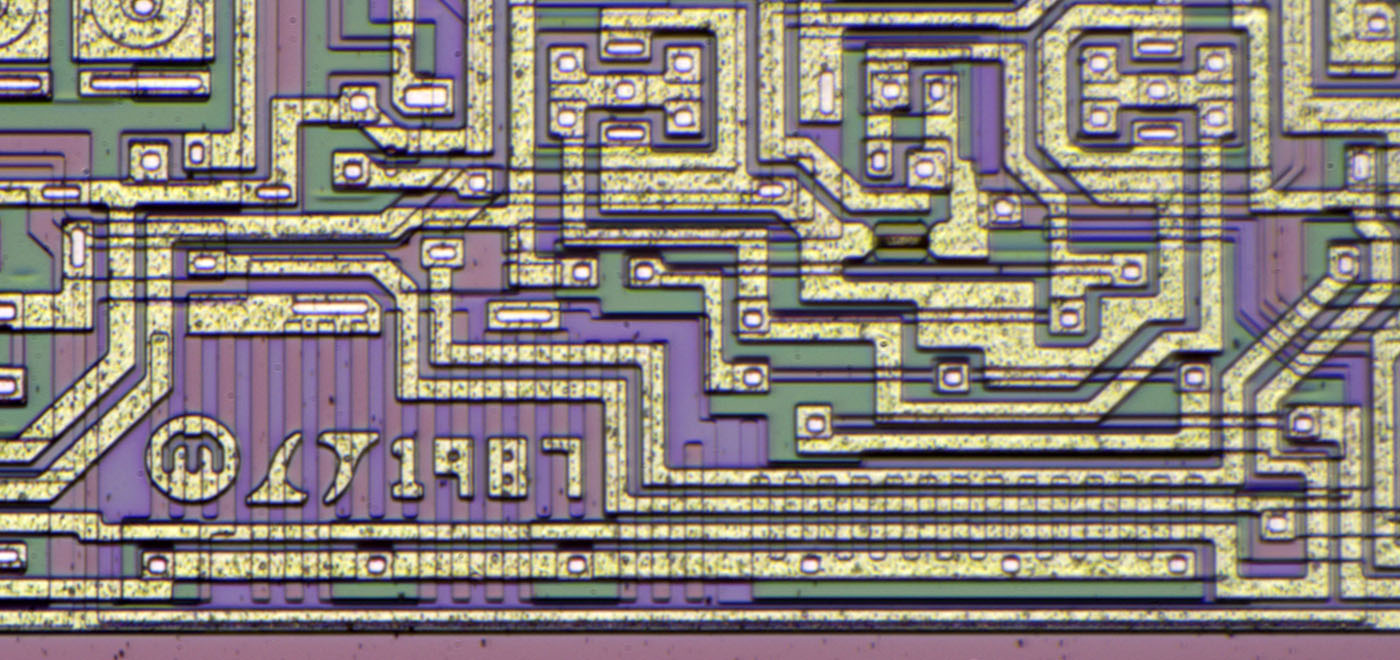
LT1085-die
My first assumption was that they use these structures to generate fixed output voltage regulators. The structures are connected to the ADJ-Pin.
Another explanation: That is some change in the control loop. That would explain why it is different in the smaller LT1084- and LT1085-die.
